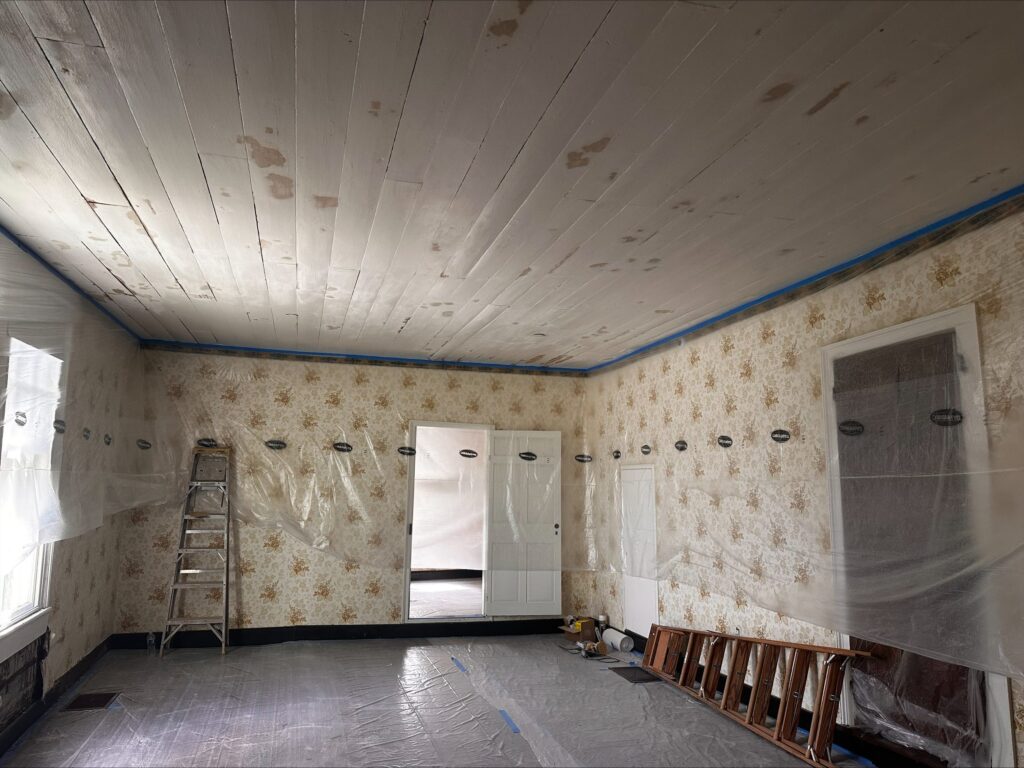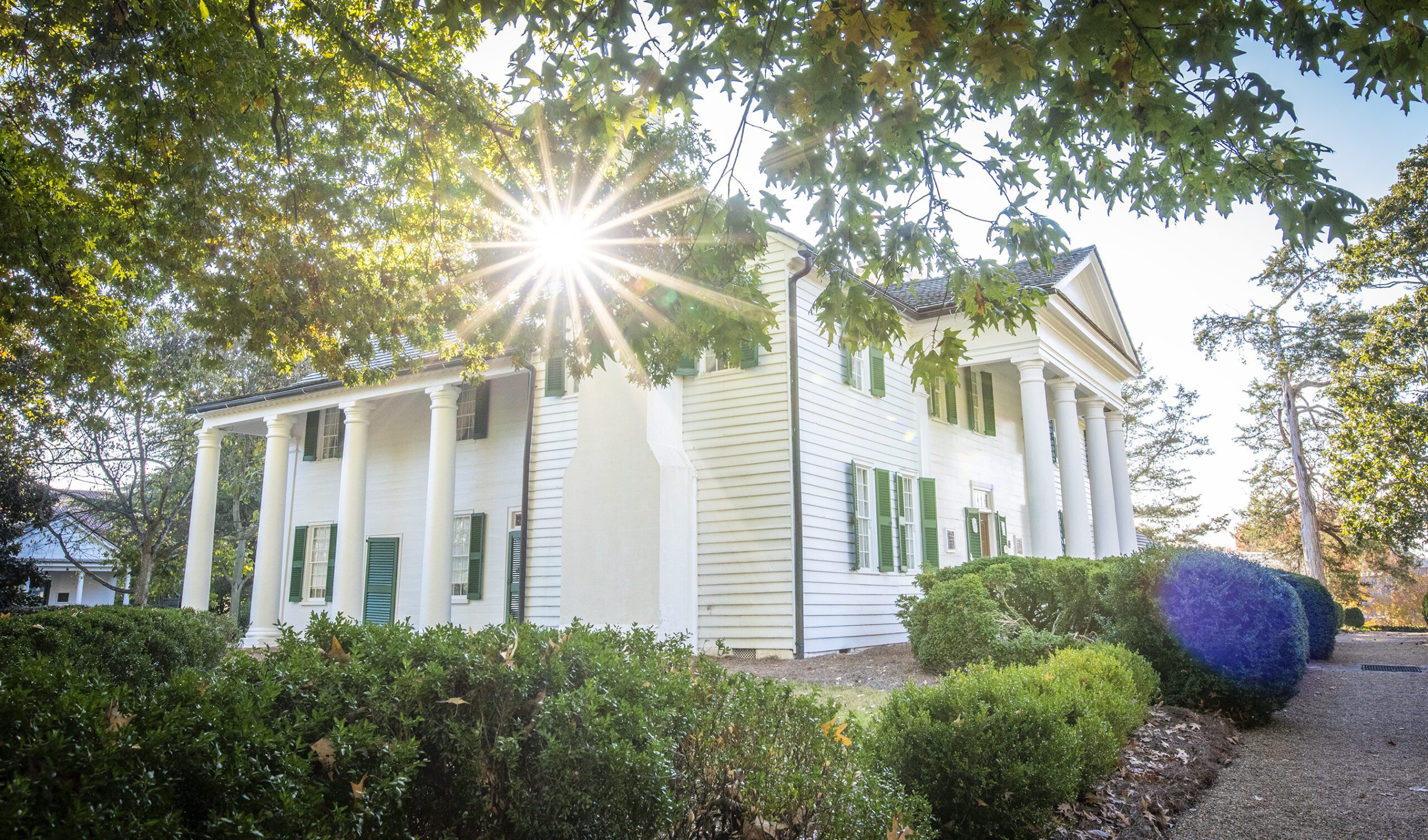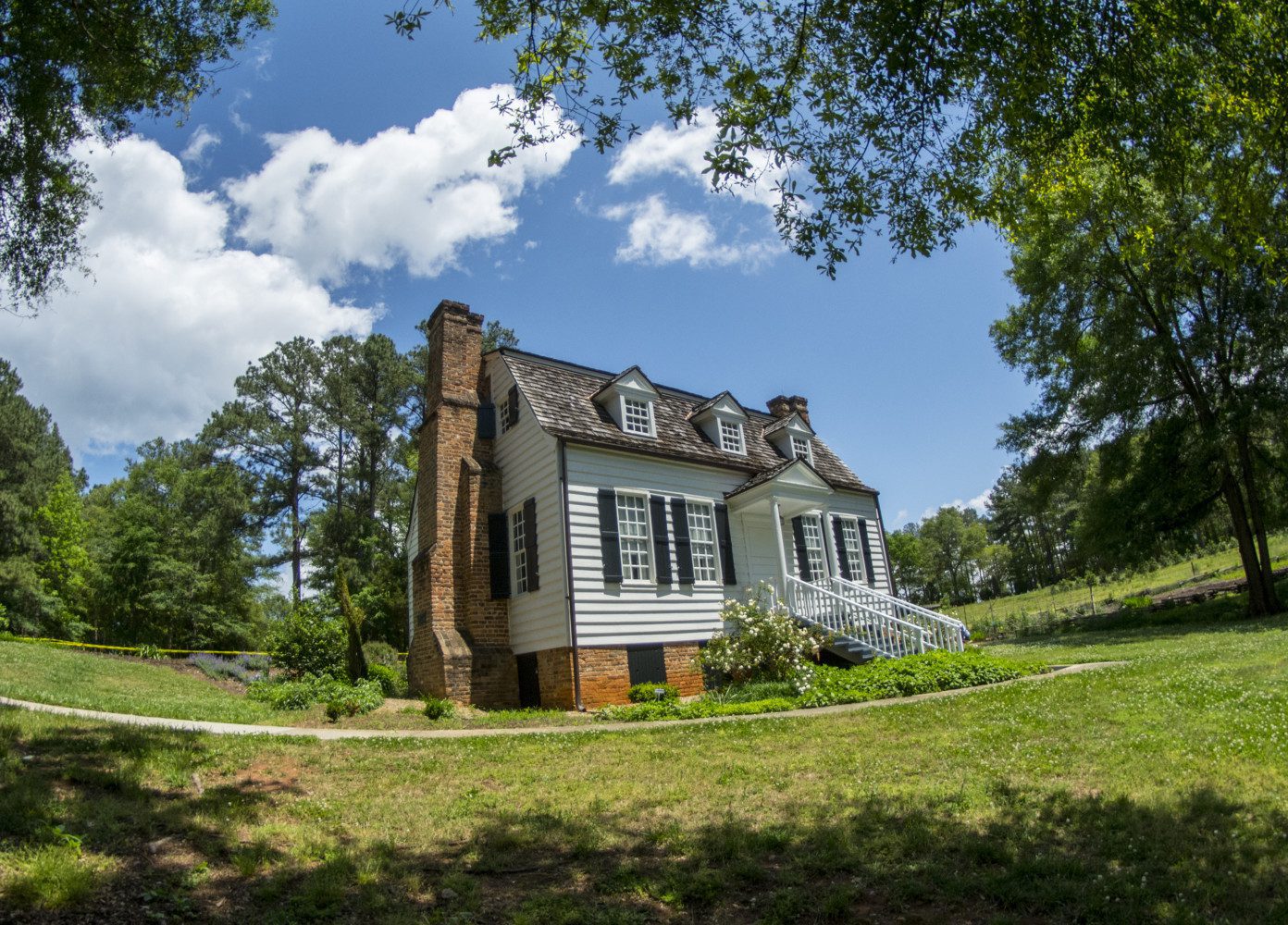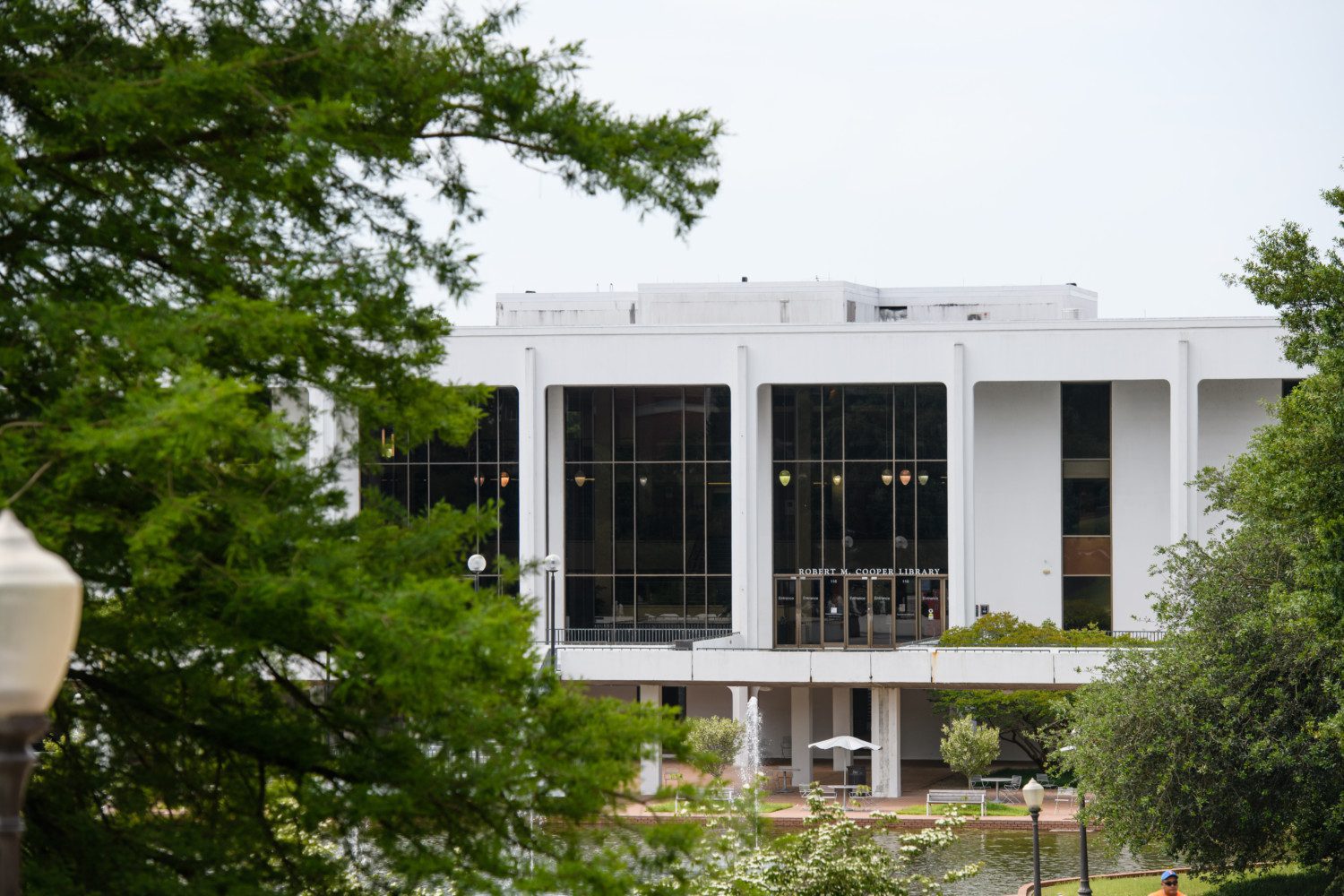Fort Hill National Historic Landmark is undergoing some repairs and restoration work this fall to fix damage caused by a boiler malfunction in the basement that occurred this past March.
Most of the damage happened in the primary bedroom and the nursery on the first floor of the house due to a steam leak in the basement. Wallpaper will be replaced, the ceiling will be repainted, and some cracks in the walls and around the windows will be repaired. The hardwood floors will also be refinished throughout the first floor.
The steam even damaged the paint on parts of the exterior of the home, so the exterior of the house will also be repainted. The cost of the repairs and repainting is being covered by insurance.
Working with a historic preservation consultant, University Historian Otis Pickett and Historic Preservation Officer Rick Owens, determined the original paint color of the home through a process called “cratering.” The paint was also analyzed with other technology that historic preservation officers use to examine paint color, type of paint, and time that the paint was applied to the home.

“A new discovery was made,” Pickett said. “We were amazed by what we saw. As long as anyone today has been alive, the Fort Hill house has been bright white. What we learned was that in the 1840s, when the Calhouns lived in the home, and after the Civil War, when the Clemsons lived at Fort Hill, the home was more of a cream, off-white color. The bright white we see today was paint that was not created until after the industrial revolution.”
As part of the restoration, the house will be repainted to its original cream color from the 1840s, restoring Fort Hill to its original appearance. The house was not painted white until the 1920s, said Owens.
“This was an incredible fact to learn thanks to innovative practices in historic preservation,” Pickett said. “As we are trying to interpret the home, Calhoun’s life, Clemson’s life and the context of the time, we are trying to make the home as historically accurate as possible to when they lived here. We think that by painting the home the original color of what it was in the 1840s will help us continue to do just that.”
Pickett noted that other historical homes of our nation’s founders, such as Monticello, have done similar restoration work.
“We believe we are following the best practices in our field along with taking advice from peer institutions and museums. It will take some getting used to for some, but I see this as an important opportunity to get history right,” he said. “We want to present as accurate a picture as we can of Fort Hill when the Calhoun and Clemson families lived there, as well as the enslaved laborers, woodworkers and craftsmen who built the home.”
Work should take approximately six to eight weeks with minimal disruption to the operations of the house. The main bedroom and nursery will be closed during the work, and Fort Hill will be closed to the public during the refinishing of the floors, but the date of that specific work has not been determined. Check the Historic Properties website and Facebook page for the latest updates on operating hours.
Fort Hill is the antebellum plantation of former U.S. Vice President John C. Calhoun, which then passed to his daughter, Anna Maria Calhoun Clemson and her husband, Thomas Green Clemson. In his will, Clemson stated that Fort Hill must be preserved and “always be open for the inspection of visitors.” Fort Hill is open Monday through Saturday (closed on home football game days) from 10 a.m. to noon and 1 to 4:30 p.m. and on Sunday from 2 to 4:30 p.m.







